Smart Condition Monitoring (SCM) can solve down-time problems
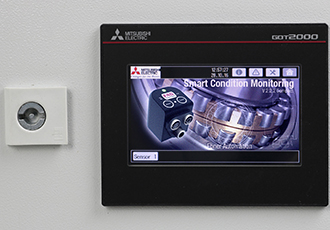
Predictive maintenance is the best answer to minimising the risks of equipment failure, however, monitoring practices in the past have been expensive, problematic and at worst, unreliable. The solution is to switch to what Mitsubishi Electric refers to as ‘Smart Condition Monitoring’, a system which can connect to rotating equipment and provide plant-wide 24-7 monitoring.
Using a Smart Condition Monitoring (SCM) system, operators can now gain access to a ‘crystal ball’ regarding the status of rotating equipment. The system can raise the alarm, predict failures in advance and provide information on recommended actions to take, all allowing for more cost effective asset management, which in-turn helps to continually avoid unplanned production down-time events and the associated excess maintenance costs.
For example, if a mixer or a refrigeration unit fails in a food or beverage processing plant, the drop in productivity alone can cost thousands of pounds per hour, which is often compounded by the further cost of wastage and unplanned maintenance. Such units should be considered ‘primary assets’ – assets which if unavailable, can bring whole sections of a plant to a total standstill. Preserving the efficiency of these primary assets is therefore paramount to meeting KPIs and ultimately achieving profitability.
With recent developments in modern sensor technology, businesses can now engage in ongoing monitoring activity in a reliable and cost effective manner. As a result, it has never been easier to avoid the catastrophe of unplanned down-time - the nightmare of production and maintenance teams across the food and beverage industry. SCM relies primarily on developments in sensor functionality, networking and the use of smart controllers to provide continuous monitoring.
With advances in technology, a wide range of factors can be automatically monitored and cross referenced by an SCM, including vibration characteristics, operating temperatures, drawn current and shifts in operating parameters. The system utilises multiple smart sensors, physically attached to the asset (using glued, screwed or magnetic fixings), which feedback information via Ethernet to an advanced sensor controller which incorporates a Mitsubishi Electric PLC at its heart.
The solution can be used as a self-contained, stand-alone device (well suited for feasibility studies or trials) or as a fully integrated system, allowing information to be transmitted across the factory for easy access via HMIs on the shop floor, to PCs connected to higher level data systems, or to mobile devices over local WiFi, the internet or mobile networks. The crucial data analysis is performed on board the PLC, so the system can be relied upon to transmit simple but accurate overviews or warnings to operators in real-time prior to any significant asset failure.
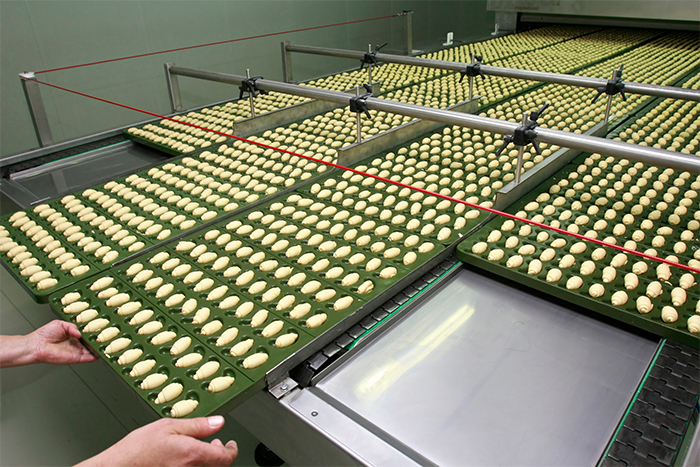
Above: Thanks to recent developments in modern sensor technology, it has never been easier to avoid the catastrophe of unplanned down-time - the nightmare of production and maintenance teams across the food and beverage industry
An intuitive graphical interface, as with many of the latest automation technologies, is vital for operators to diagnose potential issues without expert knowledge. Utilising the installation of HMIs configured to display basic parameters, the system can automatically create conditions and alarms with an associated text description. Diagnostics can be configured to display all data regarding an asset, or a general overview that can be simplified into a traffic light alert system displaying overall condition for ease of assessment. Thanks to an associated app, operators can also use a mobile device to monitor the status of equipment while on the go.
Once in operation, an SCM system can detect a wide range of potential issues. These include bearing defects from races or balls and rollers, motor imbalance, misalignment, instability, resonant frequencies, breakages, blockages and low levels of lubricant, temperature fluctuations and phase failure in power components. From these faults, the system can offer suggestions for future operation, more precise error identification and trend analysis.
By spreading sensors around the plant and including information from other automation systems, the reach of an SCM goes far beyond the more traditional methods that would typically concentrate on a specific power transmission component. This means that many smaller ancillary systems can also be connected economically, reaching out from primary assets to take into account a more holistic and therefore far more effective, encompassing view of the production facility itself.
The importance of such systems has increased as production managers are now required to attain a reliable ‘future’ plant, with new approaches needed to allow for increased digitisation and ensuring the adaptability of processes for future technological development. These trends have seen the demand for condition monitoring systems increase over the last few years, which is not likely to slow down - given a number of market sources are predicting the industry will undergo compound annual growth (CAG) up to seven percent for the period to 2020.
The cost to the industry of not adopting an SCM approach is equally as daunting - a report from international business analysts Dunn & Bradstreet indicates that 49% of Fortune 500 companies experience at least 1.6 hours of down-time per week, which is the equivalent of two working weeks a year. Down-time cost estimates for food producers vary wildly from hundreds of pounds per hour to tens of thousands, depending on the size and nature of the process so, cumulatively it’s clear the cost to the industry is huge. As global competitiveness increases, those with an advantage are likely to take the spoils.
By utilising a smart approach with regards to condition monitoring, proactive maintenance can become part of the plant system architecture, providing continuous access to the diagnostic information that operators require to safeguard assets. Maintenance policies can be safely amended to increase productivity, for example, relaxing set lubrication schedules and using the monitoring system to signal on-demand maintenance for whichever asset requires attention instead. Through unparalleled access to diagnostic information, resources can be effectively channelled to improve efficiency. With total access available via a combination of smart devices, networking and the use of ‘smart manufacturing’ principles - responses to alarm conditions can be faster, with both production and maintenance teams referring to accurate, predictive ‘live’ information.
For the food and beverage industry, where profits or stock can be severely affected by unplanned down-time, an SCM system allows not only full condition monitoring to avoid failure but also the automation IT framework to synergise the use of maintenance resources in a cost effective and efficient manner.
Similar articles
More from Mitsubishi
- Want a robot but don’t know where to start? 11th June 2021
- A pizza challenge for Control Freaks 22nd April 2021
- Competitive factories need to leverage the power of data 15th April 2021
- Combining user-friendliness with high performance 16th March 2021


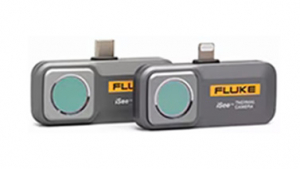
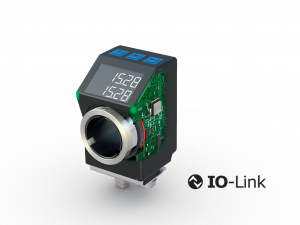
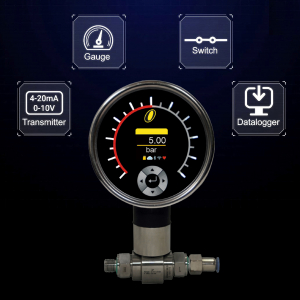







Write a comment
No comments